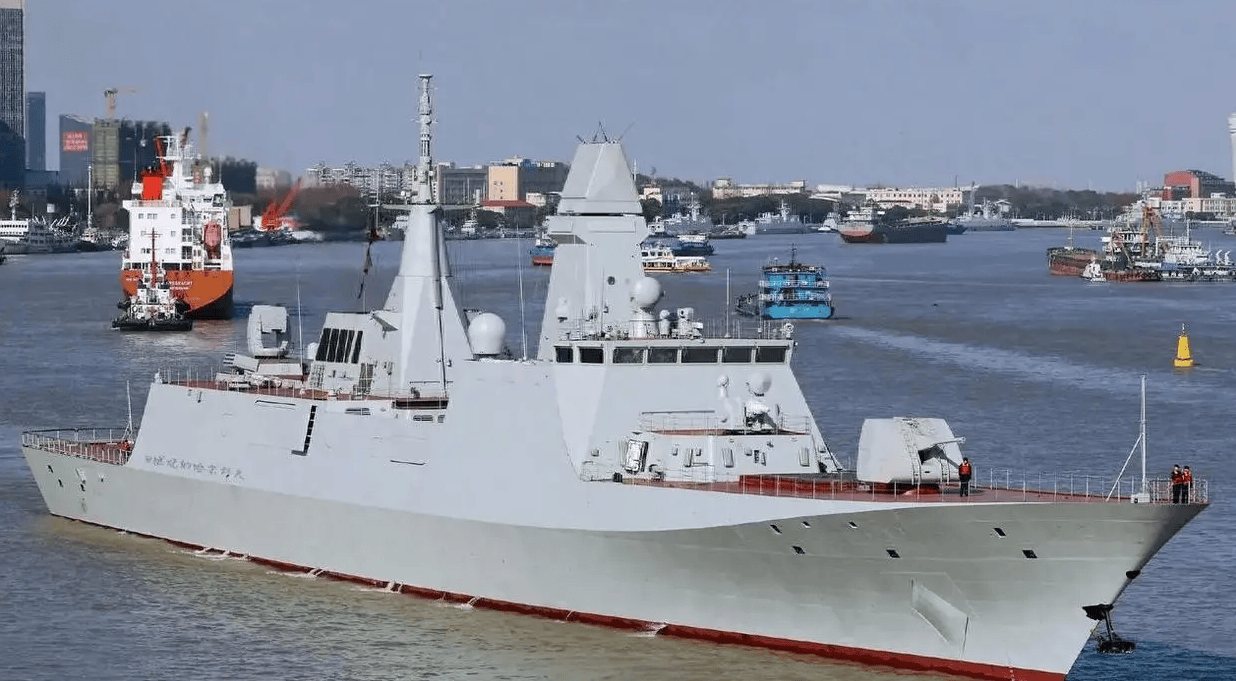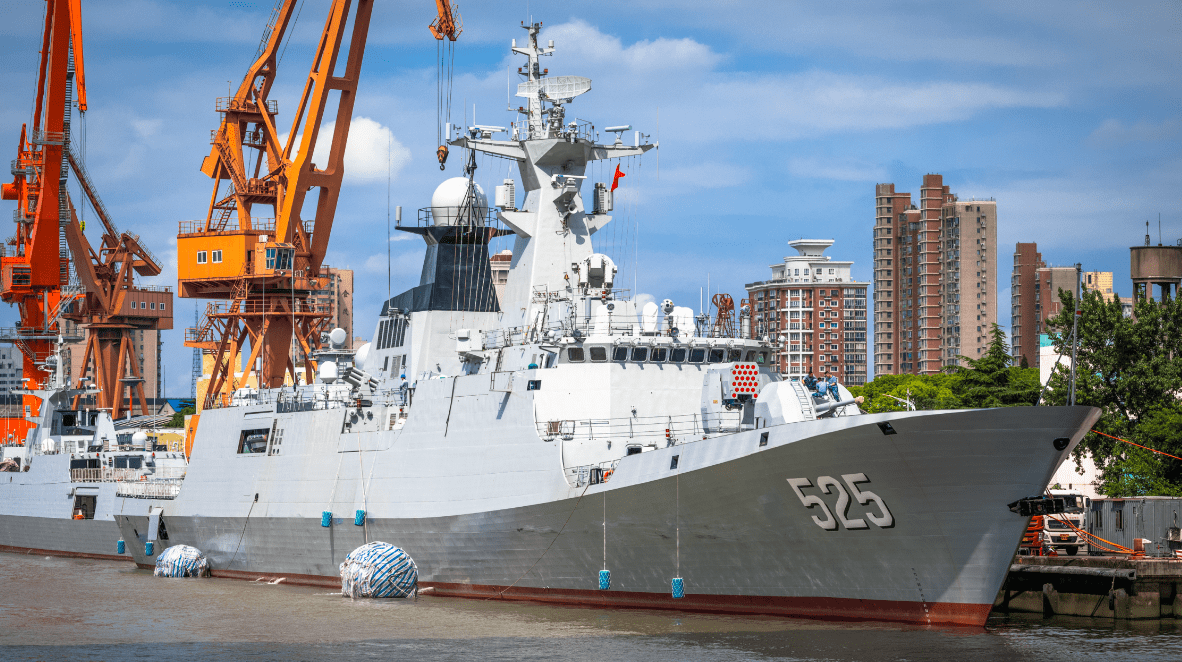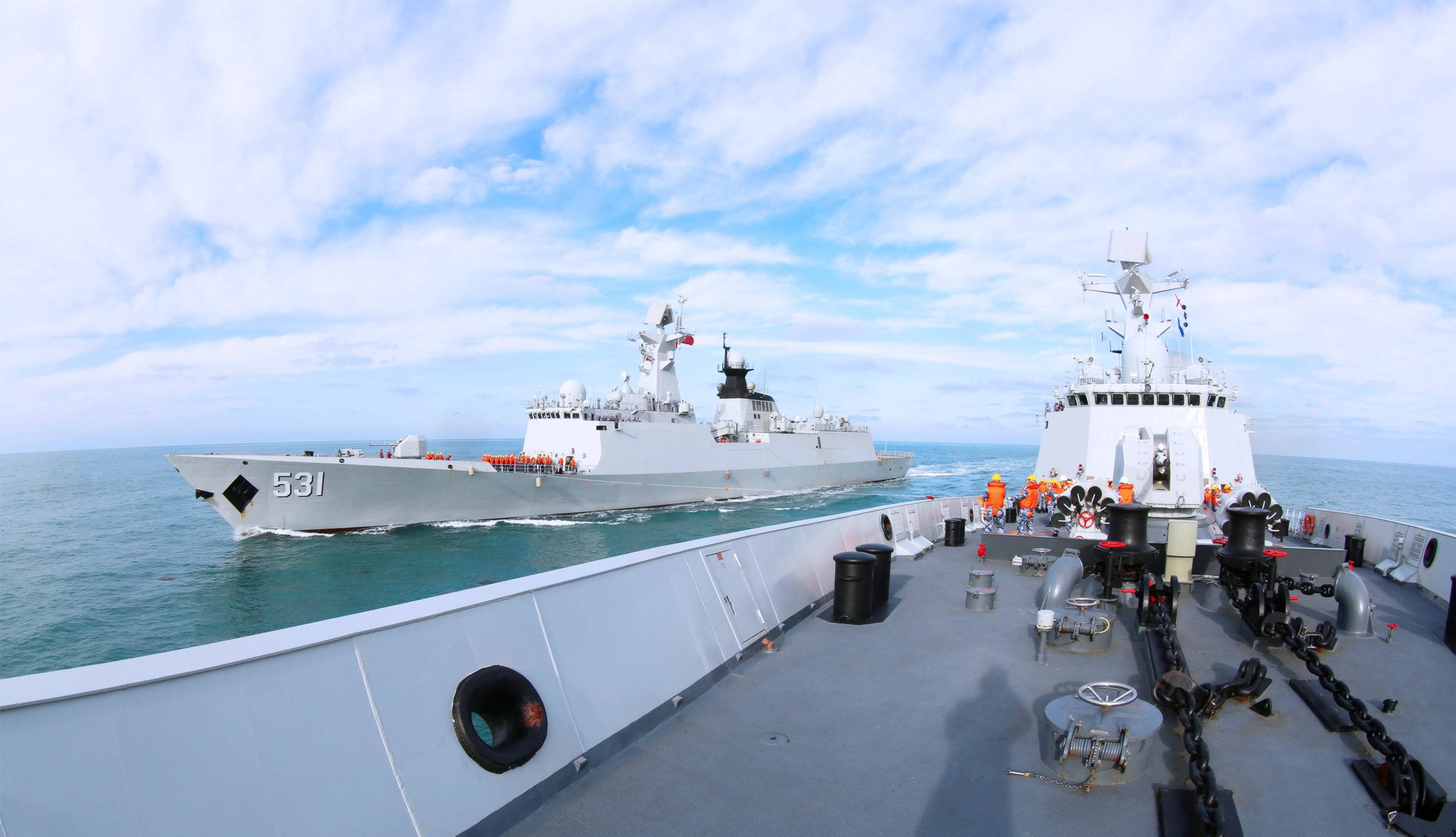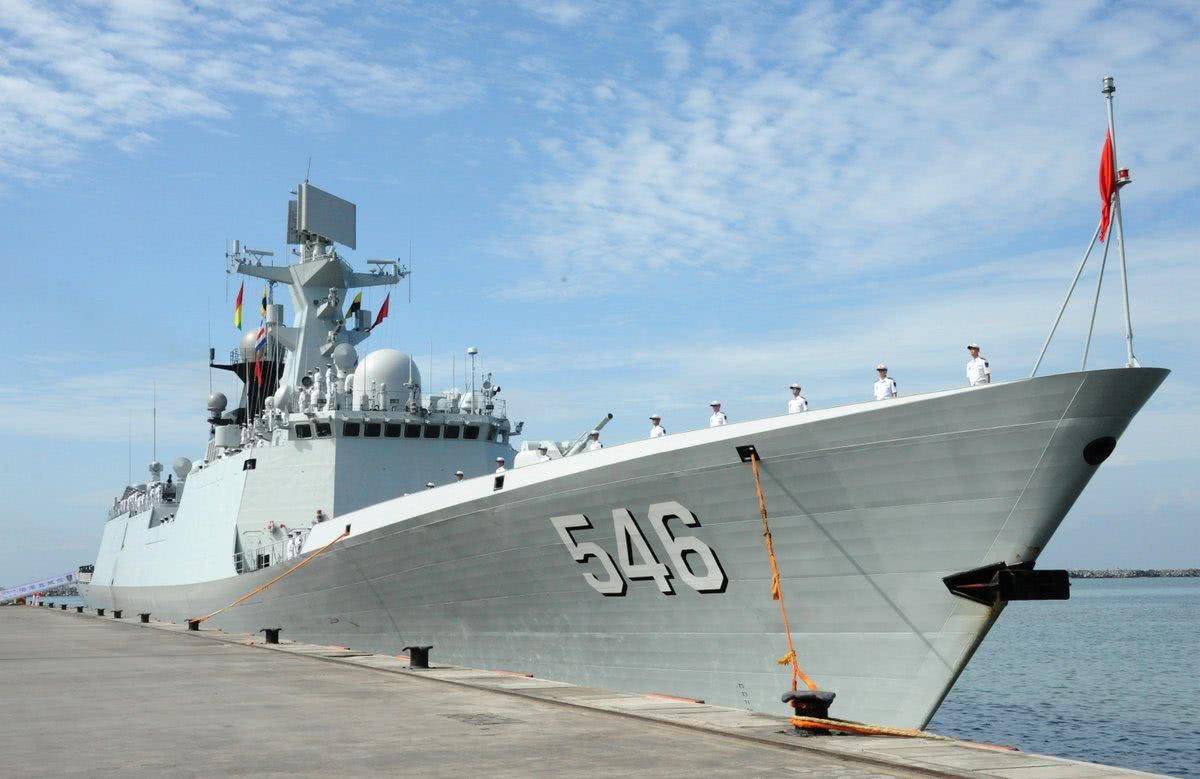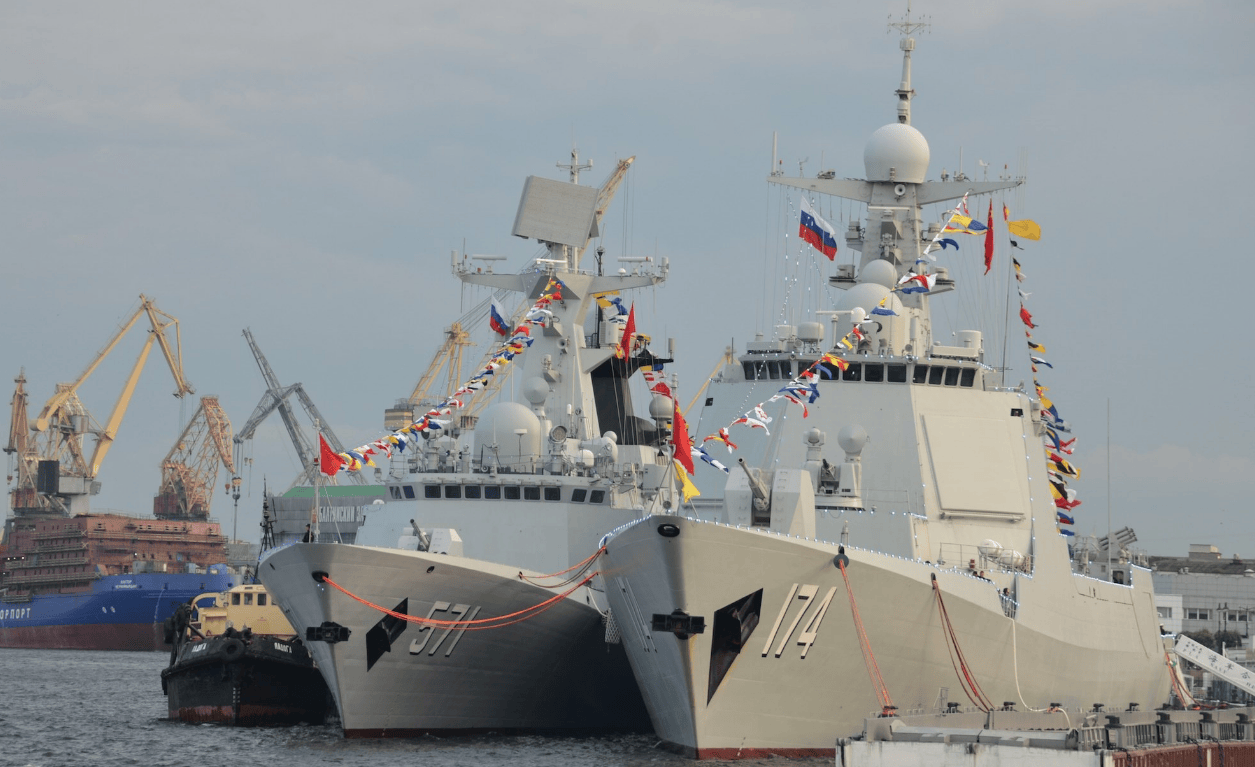This is West think tank and as usual, they pooh-pooh Chinese joint operation progress
Download the PDF file from the source
Dr. Brendan S. Mulvaney
Director, China Aerospace Studies Institute
Click here for the PDF of the full report

- Published July 22, 2024
- China Aerospace Studies Institute
The Big Picture
As the People’s Liberation Army (PLA) moves ever closer to its centennial anniversary, it shows no signs of slowing the pace of modernization. Under the direct guidance of Xi Jinping, Chairman of the Central Military Commission (CMC) of the Chinese Communist Party (CCP), the PLA has focused heavily on the most advanced and modern aspects of warfighting, with the express goal of catching up to the United States. Chairman Xi has explicitly directed the PLA to have the capability to invade Taiwan by 2027, the 100 year mark. Let us be clear, this is not a timeline or deadline for such an action. Instead, this is an aspirational readiness goal that Chairman Xi has set for the PLA, and they are working at it diligently. Whether they succeed or not depends on many factors, some of which lie within the control of the PLA, some with Taiwan, some with the U.S., and others with the international community as a whole. Whether the PLA hits the centennial mark on time or is slightly delayed is not important. What is important is that they have a goal, they know what they have to do to achieve that goal, and they are moving determinedly to do so.
The PLA is making progress more rapidly in some areas than others–faster even than the United States. In hypersonics, for example, the PLA is demonstrably ahead of the U.S., having fielded four brigades of hypersonic weapons, while the U.S. has yet to get similar weapons out of the test phase. Will U.S. hypersonics be better, faster, more accurate, etc.? Very likely, but we won’t know until they are actually employed on a battlefield. Until that time, China remains in the lead.
In other areas, like “jointness” for example, the PLA is far behind the U.S. and our allies and partners. However, the driving reason behind the massive reforms Chairman Xi initiated in 2015 was to make the PLA more joint in its organization, training, and warfighting ability. The PLA has watched the U.S. and allies and partners fight for two decades, and it has closely observed the amazing warfighting advantages that jointness has delivered. The PLA wants to be able to do the same.
In some areas, PLA modernization efforts have barely begun. Close air support (CAS) is a perfect example of this. The PLA can barely spell CAS, whereas CAS is exercised and employed by all services of the U.S. joint force day in and day out. The caveat remains: the Chinese know their CAS inexperience, they have a plan to fix their shortcomings, and they are diligently working on it.
At the end of the day, the CCP maintains the initiative on the timing of any military action against Taiwan. Because of this, the CCP will likely wait until they have high confidence of success in all of their military capabilities before they resort to military force against the free and democratic people of Taiwan, unforeseen external events notwithstanding.
People’s Liberation Army Services and Forces
As the PLA pursues wholesale modernization, there are several notable areas of focus attracting greater resources and leadership attention, almost all of which involve aerospace.
The Strategic Support Force (SSF) is the lead organization for warfighting in the Information Domain, which the PLA conceives of as a domain in and of itself, equal to Air, Land, Sea, and Space. The SSF’s remit includes both space and cyber, because the PLA sees those as two sides of the same coin, particularly when viewed through the lens of countering intervention by the U.S. and allies and partners in a Taiwan or regional contingency. China is “all in” when it comes to space. They want to reap all of the potential peacetime economic benefits available to space-capable nations. If and when kinetic violence occurs, the CCP wants to be ready and capable of fighting from, to, and in Space. We have seen remote proximity operations, satellite grappling and disposal maneuvers, fractional orbital tests, on-orbit refueling and service programs, and plans for a space plane. The Chinese have been thinking about and planning for war in space for a long time. It is the U.S. military, and our allies and partners’ turn to play catch up in this regard. On that score, the U.S. Space Force, in coordination with our British, Australian, Japanese, and other allies, is now moving out quickly to make up for lost time.
The PLA Rocket Force (PLARF) continues to have the largest and broadest missile program of any military on the planet. Unencumbered by arms control treaties, the PLARF developed an entire array of rockets and missiles from short range to intercontinental, from tactical to strategic, and from conventional to nuclear. The PLARF continues to intermingle nuclear and conventional units, equipment, and command and control, as a feature (not a bug) of its system. As China continues to build out its nuclear triad, we will have to wait and see how their Nuclear Command, Control, and Communications (NC3) adapts, but until then you can read about it in CASI’s publication “Chinese Nuclear Command, Control, and Communications,” available on our website at
AirUniversity.af.edu/CASI.
The PLA Air Force (PLAAF) continues to grow in size and improve in quality. We saw the massive transfer of all land-based fighter aircraft from the PLA Navy (PLAN) to the PLAAF in 2023, along with the transfer of responsibility for mainland air defense (which had previously been divided between the PLAN and the PLAAF). We see continued developments in the WS series of high performance jet engines. Gone are the days when aero-engines were the bane of PLAAF development–Chinese military aerospace enterprises are now producing engines nearing those from NATO nations. The PLAAF has fielded long-range air-to-air missiles that have a greater range than American missiles and continues to develop even more advanced capabilities in this area. Finally, as of this writing, we expect to see the new ‘stealth’ H-20 bomber in the near future with attendant implications for PRC force projection intentions and further development of a robust air component for its nuclear triad. Download the PDF file to read the full extent of the study
The Industrial Base of the PRC
China is competing on a “whole of society” level and has been for quite some time. Because the Chinese system is different from democracies and free market economies, it can be a challenge for people to understand just how broad and deep that competition goes. CASI has an entire project line dedicated to studying the aerospace industrial base in China. A major difference between China and free market economies is that the PRC has State-Owned Enterprises (SOEs). These are ‘companies’ that are essentially part of the PRC government and are run and directed by the CCP. A rough analogy would be if Boeing, Lockheed-Martin, and indeed JPMorgan-Chase Bank
[1] were all entities of the U.S. government to be directed from the top. This gives the PRC the ability to leverage resources across industry, academia, finance, and research organizations with the end goal of strengthening the PLA and increasing China’s “comprehensive national power.” Some of these plans may not be clandestine, but often it is not obvious to uninitiated foreign observers just how directed the activities of PRC entities truly are. One example of this is highlighted by CASI’s series on the state of hypersonics research in China. We followed up the main report with three others that detailed the cooperation of organizations and academics in Sweden with the PRC, and then with UK and PRC cooperation, and finally organizations and individuals in the U.S. that were collaborating with the PRC on hypersonics research. The goal was not to “name and shame” but rather to expose some of the methods and tactics the CCP employs to access the science and technology that they seek for PLA modernization.
In that vein, CASI has begun to outline and describe the Chinese system so that others can make informed decisions when deciding whether or not to accept Chinese money or to cooperate with Chinese organizations on national security-related research. CASI continues to improve its “CASI Database of China's National Defense Industrial Base” so that academics and leaders of institutions can understand the nature of the relationship between those who fund projects and the PLA. CASI has started producing company profiles for some of the major players in the aerospace industry like, for example, the Aviation Industry Corporation of China (AVIC), and some of the less well-known, but just as important players, like the Chang Guang Satellite Technology Company. We have also started to explain the PRC State & Defense Laboratory System, first with an overview and then with a deeper report into individual parts of the apparatus.
As NATO member states wrestle with how to rebuild their defense industrial base and shift from the efficient but fragile systems that exist now–including in the U.S.--to the stronger, more resilient, distributed, and robust military-industrial ecosystems that are required to face powerful peer competitors, China continues to drive its formidable military industrial base to new heights. PRC maritime industrial capacity is perhaps even more dominant than that of the PRC’s aerospace industrial capacity. China has nearly 47 percent of the global ship-building market, and is the largest ship-building state by far. A single shipyard, Jiangnan Changxing Shipyard in Shanghai, currently exceeds the capacity of all U.S. shipyards combined. The aerospace industry in China is not as robust as the maritime one, but it has aspirations to get there. Unfortunately for China, the commercial aviation industry is ruthless when it comes to efficiency of aircraft and engines, and China’s C-919 is still well below par on that mark. But they are making progress, and with steady government subsidies and support over time, they will make up the difference.
All of this is possible because, despite the COVID slowdown and its lasting economic impacts, the PLA still enjoys enviable year-on-year growth in the budgets, with a 7.2% increase in 2024 alone. It is also important to keep in mind that in the PRC system it is not the PLA that pays for research and development, but rather the SOEs that foot the bill. Therefore, the actual size of the national defense budget in China is far larger than the ‘official’ numbers, and gets much closer to that of the U.S. when one compares “apples to apples.”
End Goals
What are the goals of all these modernization efforts? As declared by PRC senior leaders, the goals are:
- By 2027 to have the capability to invade Taiwan, if necessary
- By 2035 to have basically completed the modernization of the PLA
- By 2049 to return China to the “Center of the World Stage” which includes building the PLA into a “World Class Military”










